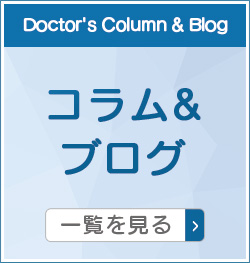昨年の3月にウィーンで開催された第1回の線維筋痛症の国際学会に参加してきましたが、残念なことに日本人医師は私一人でした。第2回の今年は、Covid-19パンデミックのため延期に加えてバーチャルでの開催となりました。
本日紹介する演題のタイトルは「考え方次第で痛みの感受しかたは変化するか?」という問題提起です。答えは、Yesです。このことは、線維筋痛症の治療アプローチの選択の上で、とても有益です。まずトルタ先生は、生物-心理-社会モデルを採りあげています。
生物心理社会モデルとは、エンゲルG.が提唱した概念です。これは疾病の理解には生物学的要因だけでなく、心理社会的要因の関与も含めて分析し、総合的な把握をするべきであるというものです。
この考え方は、心身医学の方法論に通じるものであり、例えば、線維筋痛症の診療に当たる心療内科医は、痛みの生物学的要因のみを追求することが中心となる従来の内科や整形外科とは異なり、心理社会的要因についても同時に対象とします。
また、精神神経科医は患者の心理社会的要因についての観察力や分析力は、一般の身体科の医師よりすぐれているといって良いでしょう。
しかし、生物心理社会モデルというのは、生物学的要因と心理社会的要因を独立に扱うのではなく、両者を統合的に一体的に扱うためのモデルであるため、心療内科医こそが責任を持って活用すべきモデルであるということができるでしょう。
その他のテーマとしては、疼痛関連恐怖、期待、暗示、記憶が挙げられています。その他、中枢感作、疼痛閾値の低下、エピジェネティクス、注意、マインドフルネス、破滅的思考、プラセボ、ノセボなどのキーワードが豊富に登場してきます。
とくにノセボ効果については、私が昨年ベルリンでの学会(ドイツ心身医学会)での小グループ・セッションで、ハンブルグ大学の女性研究者の口演に参加し、質問をしたテーマです。
プラセボ(プラシーボ)効果は良く知られていますが、ノセボ効果はまさにその逆方向の現象であるといえます。
臨床の現場において、患者さんの自然治癒力を最大限に引き出すためには、プラセボを活性化させ、ノセボを不活化させることを同時に可能とするスキルを獲得することが必要になることでしょう。
Can the Way we Think Change the Way we Perceive Pain?
考え方で痛みの捉え方を変えられるのか?
Riccardo Torta
(リッカルド・トルタ)
University of Turin, Italy
(トゥーリン大学、イタリア)
Summary
According to the bio-psycho-social model, pain perception is not only linked to somatic components, but is strongly influenced by emotional, cognitive and social aspects. Mood depression, similarly to anxiety and chronic stress, favours pain through a central sensitization and a reduction of the pain subthreshold, as confirmed by epigenetic and clinical studies (Satyanarayanan et al., 2019; Shigetoh et al., 2019). On the other hand, the relationship between mood and pain is not only of co-morbidity, but it is also of co-pathogenesis, because the two pathologies share similar background aspects, such as neurotrasmettitorial, immune and hormonal ones. In its turn also cognition can influence pain perception through several mechanisms, such as attention, expectation, fear, memory, etc. that are mostly interconnected.
Directing attention towards a painful stimulus seems to increase its perceived intensity. On the other hand, distraction reduces pain perception, as well clinically evidenced by psychological interventions, such hypnosis, mindfulness, imagery, etc. that nevertheless work on different cognitive aspects. For example fMRI studies from hypnosis show a decreased activity in the thalamus and long term mindfullnes induces a deactivation of prefrontal cortex (Casiglia et al., 2020; Vanhaudenhuyse et al., 2014). Nevertheless neuroimaging techniques can show important confounding factors and it is under discussion if neuroimaging techniques are suitable to measure attention, and, particularly, the attentional modulation of pain (Torta DM et al., 2017). Another approach is the evaluation of the event-related brain potentials (ERPs), elicited by nociceptive stimuli. They are largely influenced by vigilance, emotion, alertness, and attention and can represent neurophysiological indexes of the processes underlying detection and orientation of attention toward the eliciting stimulus (Legrain et al., 2012).
Pain-related fear has been implicated in the transition from acute to chronic pain and its persistence: fear of pain can further stimulate avoidance behaviors that contribute to the avoidance of many activities, leading to inactivity and, ultimately, to greater disability. Pain-related fear has been implicated in the transition from acute to chronic pain and its persistence and it is particularly evident in catastrophising Patients (Khalid and Tubbs, 2017).
Expectation, is usually associated with learning (mainly concerning past experiences), and can be one of the most relevant background of the placebo effect.
The placebo effect (expectation for pain relief) releases endogenous opioids and facilitates analgesia, strengthening exogenously administered opioids. Nocebo hyperalgesia (expectation for persistent or worsening pain) opposes endogenous opioid analgesia The placebo component can act on any kind of therapeutic intervention, making more efficacious an antalgic treatment, through a releases of endogenous opioids and facilitates analgesia from exogenously administered opioids. In his turn, the nocebo hyperalgesia (expectation for persistent or worsening pain) opposes endogenous opioid analgesia and reduces the effectiveness of a cure, counteracting, almost in part, the biological antalgic activity of a treatment. In this way, contextual factors (CFs) are clinically relevant: the presence of positive CFs, can reduce pain by producing placebo effects, while a negative context, characterized by the presence of negative CFs, can aggravate pain by creating nocebo effects.
A strictly related aspect is suggestion: instruction (eg thorugh psychoeducation) and suggestions (for example by hypnosis) can have a powerfull effect on pain and emotions. This activity is mediated by modifications in prefrontal systems, responsible for the top-down control and the generation of affective meaning
Memory and learning processes play an important role in persistent pain : actually the hippocampal formation and neurogenesis are involved in the development and maintenance of persistence of pain (McCarberg and Peppin, 2019).The mechanisms that underlie pain plasticity, following injury, show a striking resemblance to molecular mechanisms involved in learning and memory processes in other brain regions, including the hippocampus and cerebral cortex (Price and Inyang, 2015). In several Patients with pain the inability to extinguish painful memory trace leads to a pain chronification. Central synapses, especially excitatory synapses, are undergoing long-term memory-like plastic changes after peripheral injury Long-term potentiation (LTP), a key cellular model for learning and memory, is reported in the anterior cingulate cortex (ACC) and insular cortex (IC), two key cortical areas for pain perception emotional changes Journal of
In this way, chronic pain has to be prevented as early as possible, in order to keep ‘‘pain memory’’ from being established (Prakash and Golwala, 2011).
生物-心理-社会モデルによると、痛みの知覚は身体的な要素だけでなく、感情的、認知的、社会的な側面にも強く影響を受けている。
気分の落ち込みは、不安や慢性ストレスと同様に、エピジェネティック(飯嶋:註1)研究や臨床研究で確認されているように、中枢感作と痛みの閾値の低下を介して痛みを促進する(Satyanarayanan et al., 2019; Shigetoh et al., 2019)。
一方で、気分と痛みの関係は共病性だけではなく、2つの病態は神経系、免疫系、ホルモン系などの類似した背景を共有しているため、共病性の関係にあると考えられる。
また、認知は、注意、期待、恐怖、記憶などのいくつかのメカニズムを介して痛みの知覚に影響を与えることができる。
痛みを伴う刺激に注意を向けると、痛みの知覚の強さが増すようである。
一方、気晴らしは痛みの知覚を減少させることが臨床的にも証明されている。
例えば、催眠からのfMRI研究は、視床の活動の低下を示し、長期マインドフルネス(飯嶋:註2)は前頭前野の不活性化を誘導する(Casigliaら、2020; Vanhaudenhuyseら、2014)。
それにもかかわらず、神経イメージング技法は重要な交絡因子を示すことがあり、神経イメージング技法が注意、特に痛みの注意変調を測定するのに適しているかどうかは議論中である(Torta DMら、2017)。
もう一つのアプローチは、侵害受容性刺激によって誘発される事象関連脳電位(ERP)の評価である。
これらの電位は、主に警戒心、感情、警戒心、注意力に影響され、誘発刺激に対する注意の検出と方向性の根底にあるプロセスの神経生理学的指標を表すことができる(Legrainら、2012年)。
(註1)エピジェネティック:
一般的には「DNA塩基配列の変化を伴わない細胞分裂後も継承される遺伝子発現あるいは細胞表現型の変化を研究する学問領域」である。これは、遺伝子が変化することなく細胞分裂を通して娘細胞に受け継がれるという遺伝的な特徴を持ちます。このような制御は、化学的に安定した修飾である一方、食事、大気汚染、喫煙、酸化ストレスへの暴露などの環境要因によって動的に変化する。言い換えると、エピジェネティクスは、遺伝子と環境要因の架け橋となる機構であると言える。主なメカニズムとして、DNAメチル化とヒストン修飾がある。
(註2)マインドフルネス:
「今この瞬間の体験に気づき、ありのままにそれを受け入れる方法」(大谷, 2014)のことである。1970年代にマサチューセッツ大学のジョン・カバットジン博士は、マインドフルネスの概念を医療に応用し、8週間のプログラムを作成しマインドフルネスストレス低減法(Mindfulness Based Stress Reduction: MBSR)と呼ばれている。その後2000年にジョン・ティーズデール博士、マーク・ウィリアムズ博士、ジンデル・シーガル博士らが、MBSRを基にしたマインドフルネス認知療法(Mindfulness Based Cognitive Therapy: MBCT)を開発し、うつ病の再発予防効果を実証してから、マインドフルネスの概念が医療の世界で広く知られるようになってきた。
脳と瞑想に関する研究 ウィスコンシン大学マディソン校の脳イメージングと行動のためのワイスマン研究所で長期マインドフルネスの実践は、神経可塑性を通じて自分の脳の構造と機能を変更することが示された。
疼痛関連恐怖は、急性痛から慢性痛への移行とその持続性に関係している:痛みに対する恐怖は、多くの活動の回避に寄与する回避行動をさらに刺激し、非活動性につながり、最終的にはより大きな障害につながる。 痛みに関連した恐怖は、急性期から慢性期への移行とその持続性に関与しており、特に破局的思考(飯嶋:註3)をする患者に顕著である(Khalid and Tubbs, 2017)。
(註3)破局的思考:
一般的には、合理性のない最悪のケースを何度も繰り返し考えることと理解されているようである。長期にわたる慢性疼痛では、不安や抑うつ、怒りなどの感情が起きやすくなり、物事を否定的に捉えやすい状態に陥ることがある。痛みに関する体験を否定的に捉えてしまう考えを破局的思考(pain catastrophizing)という。この破局的思考を数値化することができる尺度が『痛みの破局的思考尺度(pain catastrophizing scale:PCS) 』であり、線維筋痛症患者の評価にも応用されている。
期待は、通常、学習(主に過去の経験に関する)と関連しており、プラシーボ効果の最も関連性の高い背景の一つである可能性がある。
プラシーボ効果(疼痛緩和への期待)は、内因性オピオイドを放出して鎮痛を促進し、外因性に投与されたオピオイドを強化する。
ノセボ過痛(持続的または悪化する痛みへの期待)は内因性オピオイド鎮痛に対抗するプラシーボ成分は、内因性オピオイドの放出を介して、より効果的な鎮痛治療を行い、外因性に投与されたオピオイドからの鎮痛を促進する、あらゆる種類の治療的介入に作用することができる。
これに対して、ノセボ過痛(持続的または悪化する痛みへの期待)は、内因性オピオイド鎮痛に対抗し、治療の効果を低下させ、治療の生物学的抗痛活性をほぼ部分的に打ち消している。
このように、文脈因子(CF)は、臨床的に関連している:正のCFの存在は、プラセボ効果を生み出すことによって痛みを軽減することができ、一方、負のCFの存在によって特徴付けられる負の文脈は、ノセボ効果を生み出すことによって痛みを悪化させることができる。
厳密に関連する側面は暗示である:指示(例えば、精神教育)と暗示(例えば、催眠による)は、痛みと感情に強力な効果を持つことができる。この活動は、トップダウンの制御と感情的な意味の生成のために責任がある前頭前野システムの変更によって媒介される
記憶と学習過程は持続性のある痛みに重要な役割を果たす:実際に海馬の形成と神経新生は、痛みの持続性の開発と維持に関与している(McCarberg and Peppin, 2019). 損傷後の痛みの可塑性の根底にあるメカニズムは、海馬や大脳皮質など他の脳領域の学習・記憶過程に関わる分子メカニズムと非常によく似ている(Price and Inyang, 2015)。痛みを持ついくつかの患者では、痛みを伴う記憶の痕跡を消すことができないことは、痛みの慢性化につながる。
中央のシナプス、特に興奮性シナプスは、末梢損傷後に長期記憶のような可塑的変化を受けている 長期増強(LTP)、学習と記憶のための重要な細胞モデルは、前帯状皮質(ACC)と島皮質(IC)、疼痛知覚感情変化のための2つの重要な皮質領域で報告されている Journal of(飯嶋:註4)
このように、「痛みの記憶」が定着しないようにするためには、慢性的な痛みをできるだけ早く予防しなければならない(Prakash and Golwala, 2011)。
註4:
英文抄録でのこの部分のセンテンスは突然Journal ofで途絶えている。著者は以下の参考文献に紹介されているいずれかの雑誌を出典として記載するつもりであったものと思われる。
ARCHIVE
- 2024年4月
- 2024年3月
- 2024年2月
- 2024年1月
- 2023年12月
- 2023年11月
- 2023年9月
- 2023年7月
- 2023年5月
- 2023年4月
- 2023年1月
- 2022年12月
- 2022年11月
- 2022年9月
- 2022年7月
- 2022年6月
- 2022年5月
- 2022年4月
- 2022年3月
- 2022年2月
- 2022年1月
- 2021年12月
- 2021年11月
- 2021年10月
- 2021年9月
- 2021年8月
- 2021年7月
- 2021年6月
- 2021年5月
- 2021年4月
- 2021年3月
- 2021年2月
- 2021年1月
- 2020年12月
- 2020年11月
- 2020年10月
- 2020年9月
- 2020年8月
- 2020年7月
- 2020年6月
- 2020年5月
- 2020年4月
- 2020年3月
- 2020年2月
- 2020年1月
- 2019年12月
- 2019年11月
- 2019年10月
- 2019年9月
- 2019年8月
- 2019年7月
- 2019年6月
- 2019年5月
- 2019年4月
- 2019年3月
- 2019年2月
- 2019年1月
- 2018年12月
- 2018年11月
- 2018年10月
- 2018年9月
- 2018年8月
- 2018年7月
- 2018年6月
- 2018年5月
- 2018年4月
- 2018年3月
- 2018年2月
- 2018年1月
- 2017年12月
- 2017年11月
- 2017年10月
- 2017年9月
- 2017年8月
- 2017年7月
- 2017年6月
- 2017年5月
- 2017年4月
- 2017年3月
- 2017年2月
- 2017年1月
- 2016年12月
- 2016年11月
- 2016年10月
- 2016年9月
- 2016年8月
- 2016年7月
- 2016年6月
- 2016年5月
- 2016年4月
- 2016年3月
- 2016年2月
- 2016年1月
- 2015年12月













